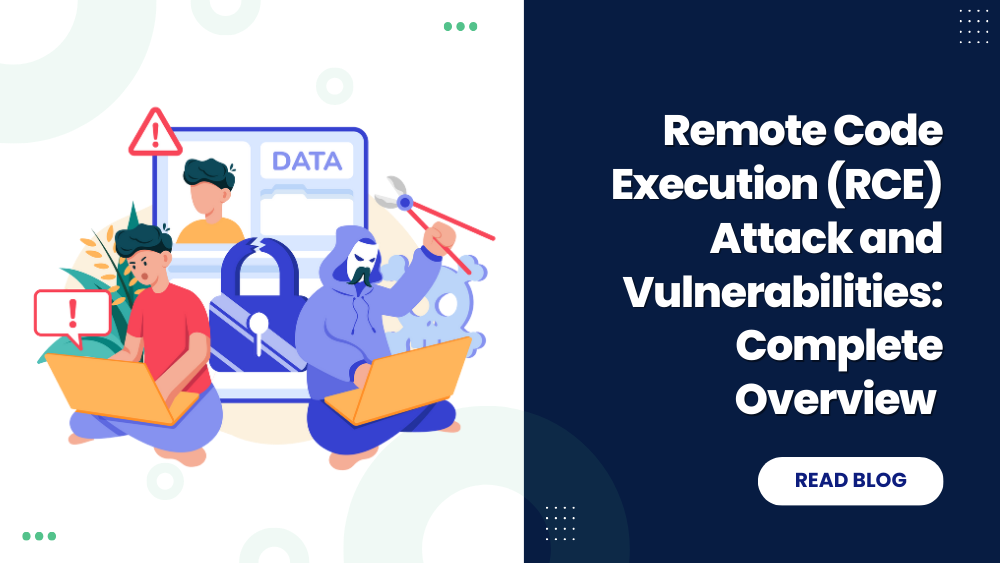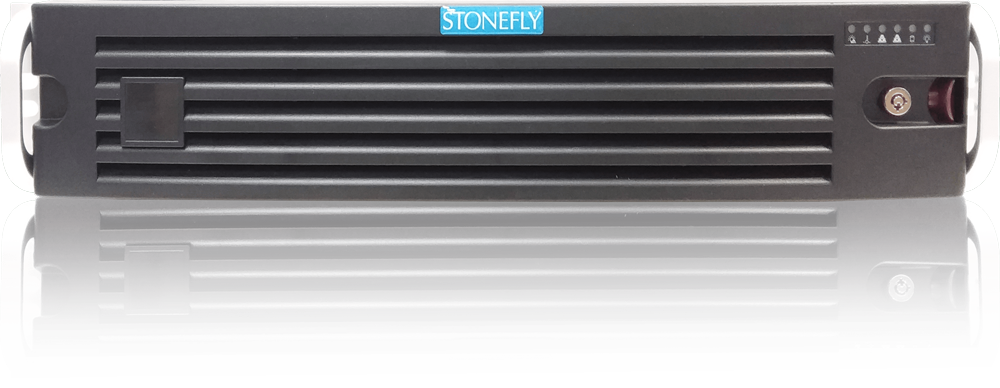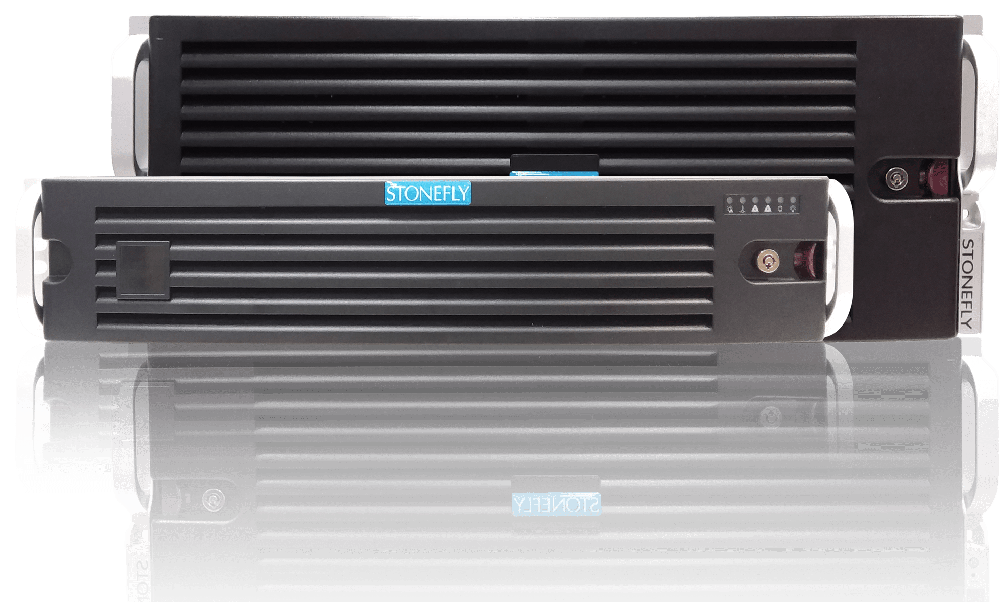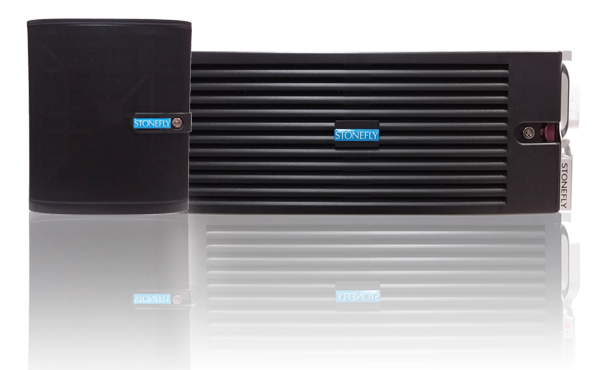Remote Code Execution (RCE) is a cyber attack where an unauthorized user can execute arbitrary code on a targeted system from a remote location. This vulnerability arises when applications or systems do not adequately validate input, allowing attackers to inject and execute malicious code. Once successful, the attacker can manipulate the system, steal data, install malware, or even gain full control over the compromised system.
The Critical Need for Safeguarding Against RCE Attacks
Remote Code Execution (RCE) attacks stand as formidable threats in today’s cybersecurity landscape, demanding our utmost attention and proactive defense strategies. The impact of an RCE attack can be disastrous, with consequences reaching far beyond just the technical realm.
- Financial Implications: RCE attacks can lead to substantial financial losses. Infiltration into critical systems can enable cybercriminals to manipulate financial transactions, divert funds, or even siphon off confidential financial data.
- Data Breaches and Privacy Violations: Unauthorized access to systems through RCE can result in significant data breaches. This compromises sensitive data such as personal information, intellectual property, or financial records, not only violating privacy but also potentially leading to identity theft or fraud.
- Reputation Damage: RCE attacks tarnish an organization’s reputation. News of a successful breach travels fast, impacting customer trust and confidence. Clients are likely to lose faith in an entity that cannot protect its systems and their data.
- Legal and Compliance Ramifications: Depending on the nature of the breached data, there may be legal consequences and non-compliance fines. Many industries are regulated regarding data security and privacy, and an RCE attack could breach those regulations.
- Operational Disruption: RCE attacks can paralyze essential services or operations, causing severe disruptions in daily activities. Downtime can lead to missed opportunities, delayed projects, and dissatisfied customers.
Given the severe repercussions of RCE attacks, organizations need to adopt a proactive and multi-layered approach to mitigate these risks effectively. This includes regular security audits, timely software updates and patches, employee training, and, crucially, the integration of robust backup and disaster recovery solutions.
By focusing on these aspects, organizations can not only protect themselves against RCE attacks but also ensure rapid recovery and minimal damage in case of an unfortunate security breach.
The Role of Backup and Disaster Recovery (DR) Solutions
In the relentless battle against RCE attacks, robust and comprehensive backup and disaster recovery (DR) solutions emerge as indispensable fortresses. It’s no longer just about fortifying your defenses against unauthorized access; it’s equally about fortifying your resilience, ensuring rapid recovery, and minimizing data loss in the event of an attack.
Mitigating Risks with Robust Backup and Disaster Recovery Solutions
- Swift Recovery: The key in the face of an RCE attack is speed. The faster you can recover, the lesser the damage. A well-structured backup and DR plan ensures rapid restoration of systems and data, minimizing downtimes and associated financial losses.
- Isolating Critical Data with Air-Gapping: Air-gapping, a technique isolating systems from networks, prevents unauthorized access and keeps critical data separate, rendering it unreachable for potential attackers. By creating a disconnected environment, it adds an extra layer of protection against RCE attacks.
- Preserving Data Integrity through Immutability: Immutability features ensure that once data is written, it cannot be altered or deleted. In the context of RCE attacks, this means even if an attacker gains access, they can’t tamper with critical data. It’s akin to making data ‘read-only,’ enhancing its security.
- Resilient Defense Layers: Air-gapping and immutability, when integrated into a comprehensive backup and DR solution, form robust layers of defense. These features act as a safety net, providing a resilient defense, and allowing for business continuity even in the face of sophisticated RCE attacks.
Understanding Remote Code Execution (RCE)
What is Remote Code Execution (RCE)?
Remote Code Execution (RCE) is a malicious attacker’s ability to execute arbitrary code on a targeted system or application. Essentially, it means an unauthorized person can access and control a device or system from a remote location. This represents a critical cybersecurity vulnerability because it potentially grants hackers full control over the compromised system, enabling them to carry out malicious actions.
Common Attack Vectors Leading to RCE
- Vulnerable Software: Exploiting vulnerabilities in software is a prevalent method. Attackers identify flaws in applications, operating systems, or plugins and then exploit these weaknesses to inject and execute malicious code remotely.
- Insecure Web Applications: Web applications with poor security measures can become gateways for RCE attacks. Attackers may manipulate input fields, inject malicious scripts, or exploit poor authentication processes to execute code remotely.
- Phishing Attacks: Social engineering through phishing emails or messages often leads to RCE. If a victim is enticed into executing malicious attachments or visiting compromised websites, RCE can be triggered by exploiting vulnerabilities in their system or application.
Types of RCE Attacks
Remote File Inclusion (RFI)
Remote File Inclusion (RFI) is a technique where an attacker exploits vulnerabilities in a web application that dynamically includes files. By manipulating input parameters, the attacker can force the application to load files from an external source, often a malicious server. This can lead to the execution of unauthorized code and actions.
RFI attacks generally target web applications that do not properly validate user input or lack adequate security measures to prevent the inclusion of files from untrusted sources.
Remote Command Injection
Remote Command Injection occurs when an attacker injects malicious commands through input fields within an application. If the application does not adequately validate and sanitize user inputs, these injected commands can be executed in the system’s shell or command-line environment with the permissions of the application.
Attackers use this vulnerability to execute harmful actions, ranging from data theft to taking control of the entire system. Common entry points for remote command injection include forms, search bars, and URL parameters.
Code Injection
Code Injection is a broad category of attacks where an attacker inserts malicious code into an application’s input fields, allowing them to manipulate the application’s behavior. This could include modifying data, stealing information, or even taking control of the entire application.
SQL Injection and Cross-Site Scripting (XSS) are prevalent forms of code injection. Attackers exploit vulnerabilities in poorly sanitized input fields to inject malicious SQL queries or scripts, which the application unwittingly executes.
Mitigating Remote Code Execution (RCE) Risks
Secure Code and Applications: Best Practices
Securing code and applications is a fundamental step in preventing RCE attacks. Here are actionable best practices:
- Input Validation: Ensure rigorous validation of user inputs to prevent injection attacks. Reject any input that doesn’t match the expected format or type.
- Access Controls: Implement strong access controls to limit permissions. Users should only have the minimum necessary privileges for their roles.
- Regular Updates: Continuously update and patch applications to address known vulnerabilities. Utilize security frameworks to automate this process.
- Security Audits: Conduct regular security audits to identify vulnerabilities and weaknesses. Address the findings promptly.
Implementing Network Security Measures: Actionable Steps
Robust network security is crucial for mitigating RCE risks. Here’s what you can do:
- Firewalls: Configure firewalls to filter and monitor incoming and outgoing traffic. Set rules to allow only essential traffic.
- Intrusion Detection and Prevention Systems (IDPS): Utilize IDPS to detect and block suspicious activities. Configure them to respond to potential RCE attempts.
- Virtual Private Networks (VPNs): Encourage employees to use VPNs, especially when accessing critical systems remotely. This encrypts communication and enhances security.
- Web Application Firewalls (WAFs): Deploy WAFs to filter malicious traffic targeting web applications. Regularly update their rules to adapt to emerging threats.
Regular Security Training: Empowering Your Team
Educating your team is a potent defense against RCE attacks. Here’s how:
- Phishing Simulations: Conduct regular phishing simulations to educate employees on identifying phishing attempts and responding appropriately.
- Security Workshops: Organize workshops to explain current cybersecurity threats and best practices. Encourage active participation and knowledge sharing.
- Incident Reporting Procedure: Establish a clear and confidential incident reporting procedure. Encourage employees to report any suspicious activities promptly.
Mitigating RCE Risks with Air-Gapped and Immutable Backup & DR Solutions
Remote Code Execution (RCE) attacks present a formidable threat, emphasizing the crucial need for robust cybersecurity measures. Among the most effective strategies in countering RCE risks are fortified Backup and Disaster Recovery (DR) solutions. Particularly, solutions integrating features like air-gapping and immutability can prove to be powerful tools in the fight against RCE attacks.
Why Use Air-Gapped Backups for RCE Mitigation
Air-gapped backups involve physically isolating backup systems from the network, creating an invaluable layer of security. In the event of an RCE breach, these backups remain inaccessible, serving as a last line of defense. Even if attackers infiltrate the network, they cannot compromise the air-gapped backups, ensuring the integrity and availability of critical data.
Detailing the Concept of Immutability and Its Importance
Immutability within a backup and DR solution involves rendering data unalterable or tamper-evident once stored. In the context of RCE attacks, immutable backups are paramount. It guarantees that once data is backed up, it remains unchanged and secure. Even if an attacker gains access to the network, they cannot modify or delete the immutable data, thus safeguarding it against malicious intent.
How Air-Gapped and Immutable Backups Act as a Last Line of Defense
In the face of an RCE attack, having air-gapped and immutable backups is akin to having a resilient safety net. They ensure that, no matter the extent of the breach, critical data remains intact and recoverable. These backups act as a foundational component of a comprehensive cybersecurity strategy, providing the ability to restore systems to a trusted state before the breach occurs.
By integrating air-gapped and immutable backups into your cybersecurity arsenal, you establish a robust defense mechanism against RCE attacks. These solutions, preserving the sanctity of your data, play a pivotal role in minimizing the potential damage and downtime resulting from an RCE breach.
Implementing Robust Backup and disaster Recovery (DR) Strategies
To effectively mitigate the risks posed by Remote Code Execution (RCE) attacks, implementing robust Backup and Disaster Recovery (DR) strategies is paramount. These strategies not only ensure data safety but also enable swift recovery, minimizing potential damage in the event of an RCE breach.
Regular Automated Backups as a Preventive Measure
Regular automated backups are the backbone of any solid cybersecurity strategy. Automated backups ensure that critical data is consistently and reliably duplicated, reducing the risk of data loss. By scheduling backups at regular intervals, organizations can guarantee that even in the face of an RCE attack, the most recent data is safe and recoverable.
Creating Isolated Backup Environments
Isolated backup environments add an extra layer of security to the backup process. By segregating backups from the primary network, even if the main infrastructure is compromised, backups remain untouched. This isolation ensures the integrity and availability of critical data during a breach.
Utilizing Backup Versioning for Historical Data Restoration
Implementing backup versioning is a prudent approach. It allows for the preservation of multiple versions of files. In the context of RCE attacks, this feature proves invaluable. In case of data corruption or unauthorized alterations due to an RCE breach, the ability to restore to a previous, unaltered version is critical.
Incorporating Air-Gapped Backups to Ensure Complete Isolation
Air-gapped backups offer the highest level of protection against RCE attacks. By physically isolating backup systems from the network, they ensure that critical data remains immune to unauthorized access or modifications. Even sophisticated RCE attacks cannot compromise backups that are air-gapped.
Leveraging Immutability to Prevent Malicious Alterations to Backups
Immutability is a pivotal feature in backup and DR solutions. It guarantees that once data is backed up, it remains unchanged and tamper-proof. In the context of RCE attacks, this ensures that even if the network is breached, backups stay protected from any malicious alterations, maintaining their integrity.
Incorporating these strategies into your cybersecurity posture significantly enhances your resilience against RCE attacks. By integrating regular automated backups, creating isolated environments, utilizing backup versioning, implementing air-gapped backups, and leveraging immutability, you establish a strong defense mechanism, ensuring data safety and continuity.
Best Practices for Remote Code Execution (RCE) Defense
Safeguarding your systems against Remote Code Execution (RCE) attacks requires a proactive approach. Implementing robust best practices not only fortifies your defenses but also bolsters your organization’s overall cybersecurity posture.
Keeping Systems and Software Updated
One of the fundamental pillars of RCE defense is regular updates. Cybercriminals exploit known vulnerabilities in outdated software. Keeping your systems, applications, and plugins up to date with the latest patches and updates is crucial. This ensures that any known vulnerabilities are mitigated, minimizing the risk of successful RCE attacks.
Conducting Regular Security Audits and Vulnerability Assessments
Regular security audits and vulnerability assessments are indispensable tools in the fight against RCE. Audits help identify weaknesses, misconfigurations, and potential vulnerabilities within your network and applications. By conducting thorough and frequent audits, you can address these issues promptly, reducing the attack surface and enhancing your overall security posture.
User Education and Training on Phishing and Social Engineering
Human error remains a significant contributor to successful RCE attacks. Educating users about the dangers of phishing and social engineering tactics is vital. Regular training sessions on recognizing phishing attempts and manipulation attempts can empower users to act as a vigilant line of defense against RCE attacks, effectively reducing the risk of successful breaches.
Limiting User Privileges and Access
Another critical aspect of RCE defense is limiting user privileges and access. Users should only have access to the resources necessary for their roles. Restricting administrative privileges mitigates the potential damage an attacker could cause in case of a successful RCE breach. Implementing the principle of least privilege is essential to minimize the attack vector.
Implementing Multi-Factor Authentication (MFA)
Multi-factor authentication (MFA) adds an additional layer of security to your systems. By requiring users to provide two or more authentication factors, such as a password and a unique code sent to their mobile device, you significantly enhance data protection. MFA is an effective measure against RCE attacks, as even if an attacker gains access to one authentication factor, they would still be unable to breach the system without the second factor.
By integrating these best practices into your cybersecurity framework, you significantly bolster your organization’s resilience against RCE attacks. Updating systems and software, conducting regular security audits, educating users, limiting user privileges, and implementing multi-factor authentication form a robust defense strategy, enhancing your overall cybersecurity posture.
Conclusion
In the constantly evolving landscape of cybersecurity threats, defending against Remote Code Execution (RCE) attacks is paramount. The potential consequences of an RCE breach, including data breaches, financial losses, and damage to reputation, emphasize the critical need for proactive measures.
By understanding the intricacies of RCE, implementing robust security practices, conducting regular security audits, and integrating advanced backup and disaster recovery solutions, organizations can significantly fortify their defense. The power of air-gapped and immutable backups can’t be overstated—they provide a last line of defense, ensuring data isolation and integrity even in the face of sophisticated cyber threats.
Schedule a Demo of StoneFly’s Air-Gapped and Immutable Backup Solutions
Discover how StoneFly’s advanced backup and disaster recovery solutions, fortified with air-gapped and immutable features, can provide an impenetrable shield against RCE attacks. Safeguard your critical data, ensuring business continuity and resilience. Don’t wait until it’s too late. Schedule a demo today.










